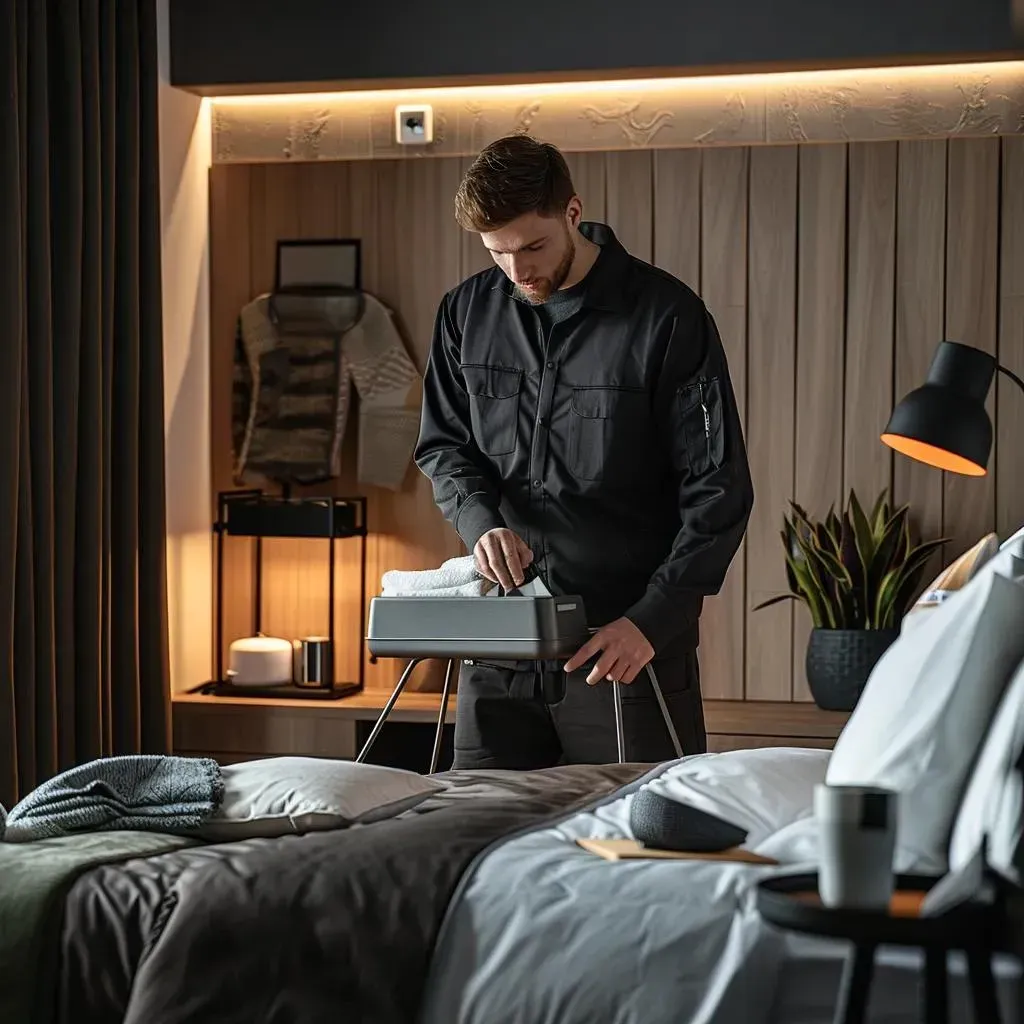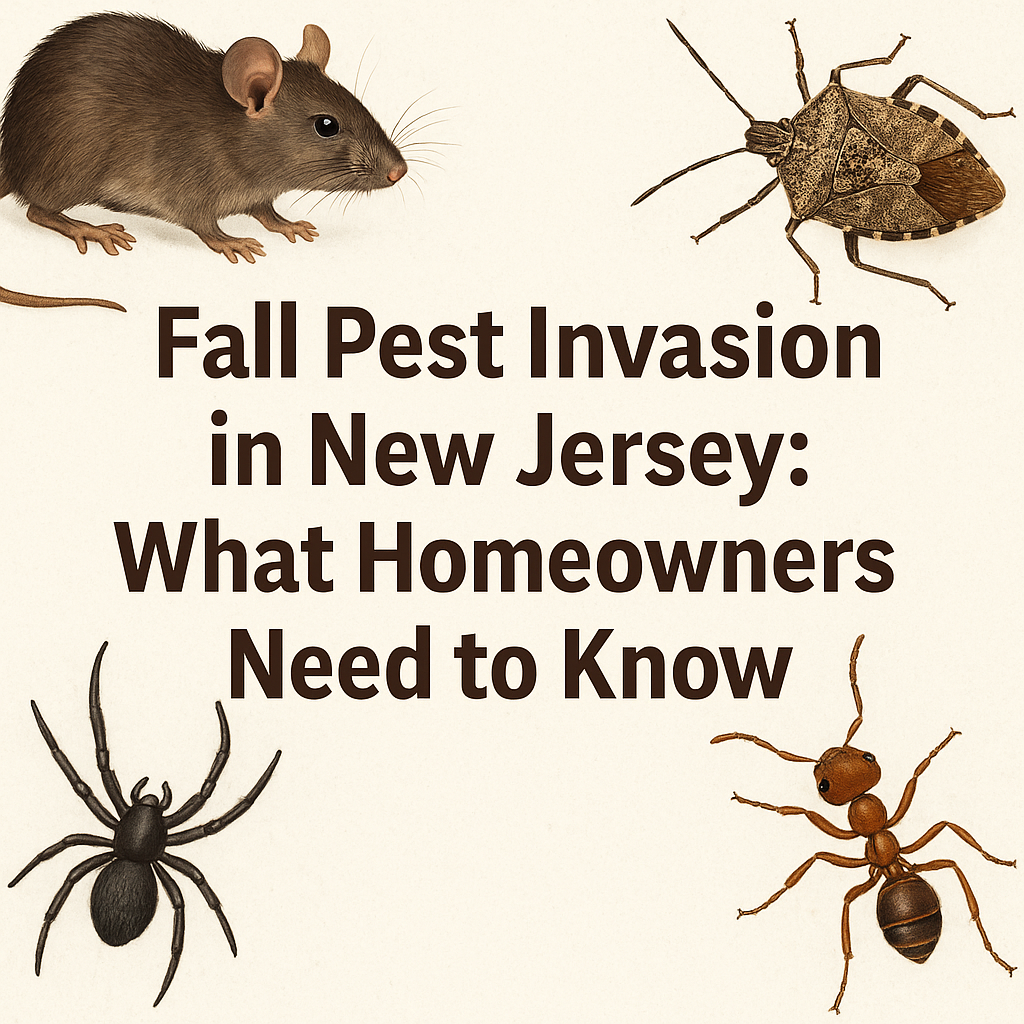Discover My Safe Way to Get Rid of Wasp Nests Effectively
Written by
Safe Way to Get Rid of Wasp Nest: Comprehensive Guide for Homeowners
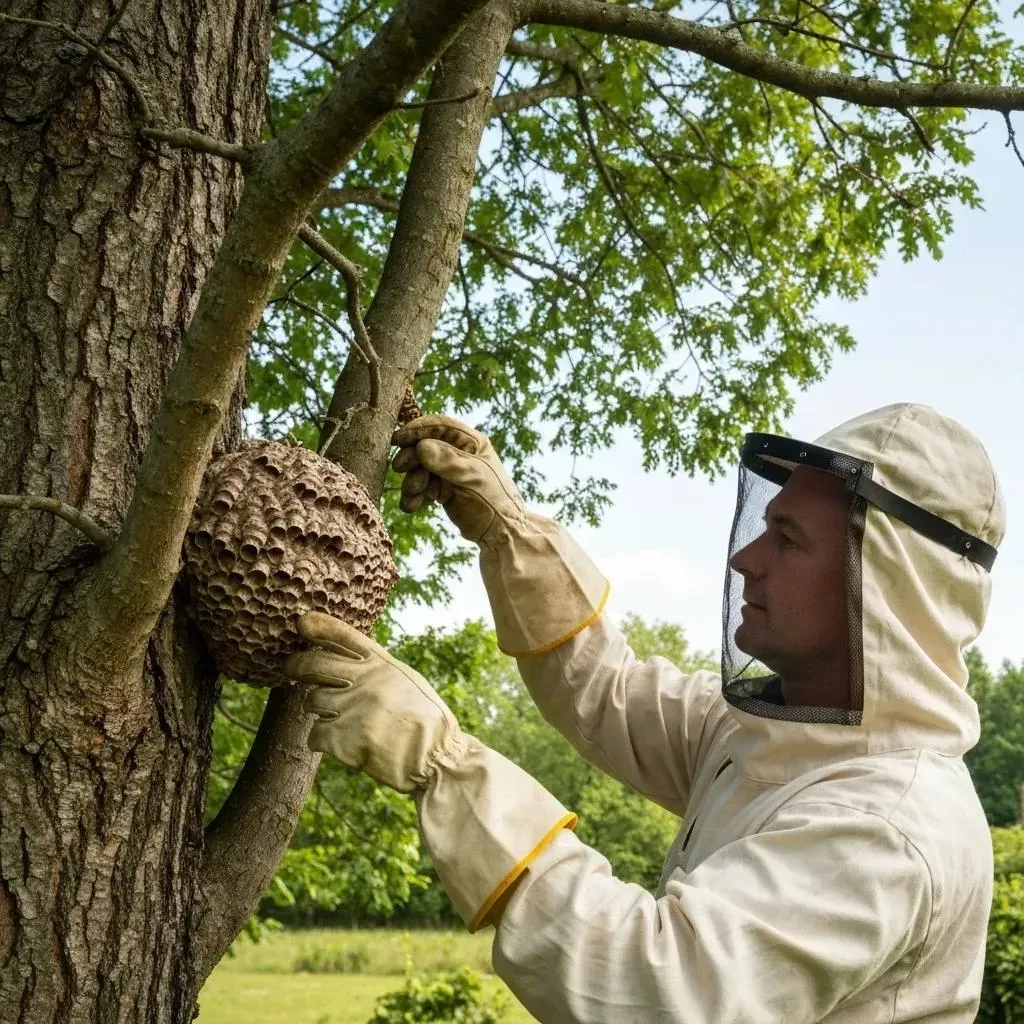
Removing a wasp nest without the right precautions can lead to painful stings, severe allergic reactions, and even property damage, so understanding a safe way to get rid of wasp nest is critical for every homeowner. This guide delivers proven strategies for identifying species, choosing DIY removal methods, recognizing when to call a professional, implementing essential safety precautions, and preventing future infestations. You will learn:
- Why safe removal matters and the risks of unsafe approaches
- How to distinguish paper wasps, yellow jackets, hornets, and bees
- Step-by-step DIY methods—from soapy spray to essential oils
- Key triggers for hiring a licensed exterminator and service expectations
- Must-have personal protective equipment and emergency steps
- Long-term prevention using decoy nests, repellents, sealing, and habitat changes
By following these structured recommendations, you’ll protect your family, respect beneficial pollinators, and confidently reclaim your home from stinging insects.
Why Is It Important to Use a Safe Way to Remove a Wasp Nest?
Safe removal of a wasp nest means minimizing the risk of stings, allergic reactions, and structural damage by applying proven techniques and proper timing. Neglecting safety can escalate an infestation into a medical emergency or costly repairs, so every step must prioritize control and containment. These precautions set the stage for accurate species identification and effective prevention.
What Are the Dangers of Removing a Wasp Nest Unsafely?
Attempting nest removal without protection or adequate method often triggers mass defensive behavior, resulting in multiple stings that can cause:
- Severe pain and swelling around the sting sites.
- Anaphylactic shock in allergy-prone individuals.
- Structural harm from frantic wasps dislodging materials.
Inexperienced homeowners risk escalating a small nest into a full-blown emergency, which underlines the need to choose a method aligned with the nest’s size and location.
How Do Allergies Affect Safe Wasp Nest Removal?
Individuals with hymenoptera venom sensitivity face higher stakes when confronting a wasp nest, as a single sting can provoke a systemic allergic reaction marked by hives, difficulty breathing, and hypotension. Those with known allergies should have an epinephrine auto-injector on hand and consider professional intervention first, since rapid medical response is critical for survival.
Wasp and Bee Sting Allergies
Allergic reactions to insect stings, including those from wasps and bees, can range from mild to severe, potentially causing anaphylactic shock in sensitive individuals. Symptoms can include hives, difficulty breathing, and a drop in blood pressure, necessitating immediate medical attention and the use of epinephrine auto-injectors for those with known allergies.
Golden, D. B. K., et al., "Stinging insect allergy: a practice parameter." Annals of Allergy, Asthma & Immunology (2011)
This research supports the article's emphasis on the importance of recognizing and responding to allergic reactions during wasp nest removal.
When Is the Best Time to Remove a Wasp Nest Safely?
Nighttime or pre-dawn hours provide the safest window for nest removal because wasps are least active and confined within the nest. Early spring is also ideal—smaller colonies are easier to manage before growth peaks in late summer to early fall. Choosing these timings reduces aggressive encounters and maximizes success with minimal insect movement.
How Can You Identify Different Wasp Species and Their Nests Safely?
Accurate species identification allows you to tailor removal strategies for specific behaviors and nest structures, preventing mistakes that can provoke more aggressive responses. Recognizing visual and habitat clues ensures you employ the right tools and timing for each wasp type.
Wasp Species Identification and Behavior
Accurate identification of wasp species is crucial for effective and safe nest removal, as different species exhibit distinct behaviors and nest structures. For example, yellow jackets often build subterranean nests, while hornets construct enclosed nests in trees or buildings, requiring different removal strategies.
Buck, M., et al., "Stinging insects (Hymenoptera: Aculeata) of the Southeastern United States: An identification guide." (2008)
This source provides a basis for the article's guidance on identifying different wasp species and their nests.
What Are the Characteristics of Paper Wasps and Their Nests?
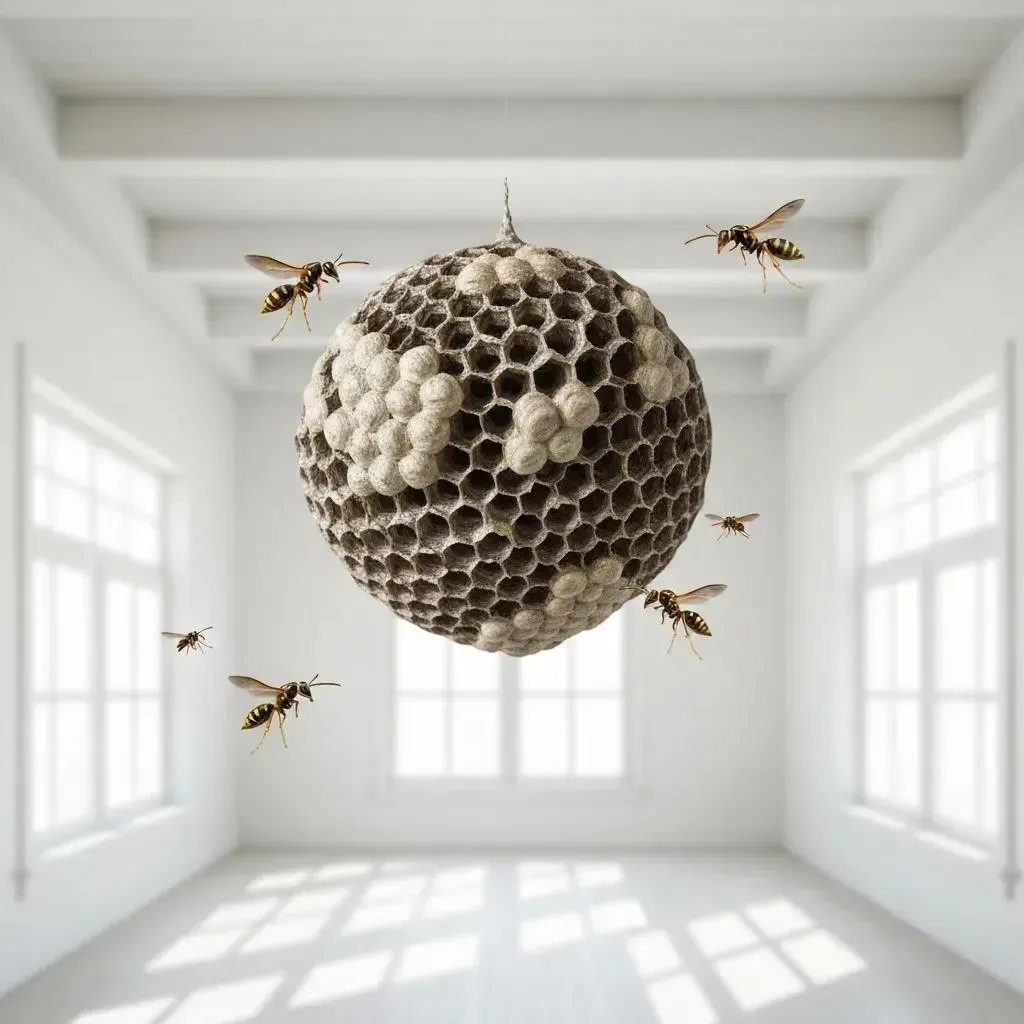
Paper wasps build umbrella-shaped nests of papery combs under eaves and ledges, featuring an open, hexagonal cell arrangement. Their slender bodies and long legs dangle noticeably in flight. Paper wasp colonies tend to be smaller (20–200 individuals), so a well-aimed soapy spray at night often suffices for safe removal.
How to Recognize Yellow Jackets and Their Ground Nests?
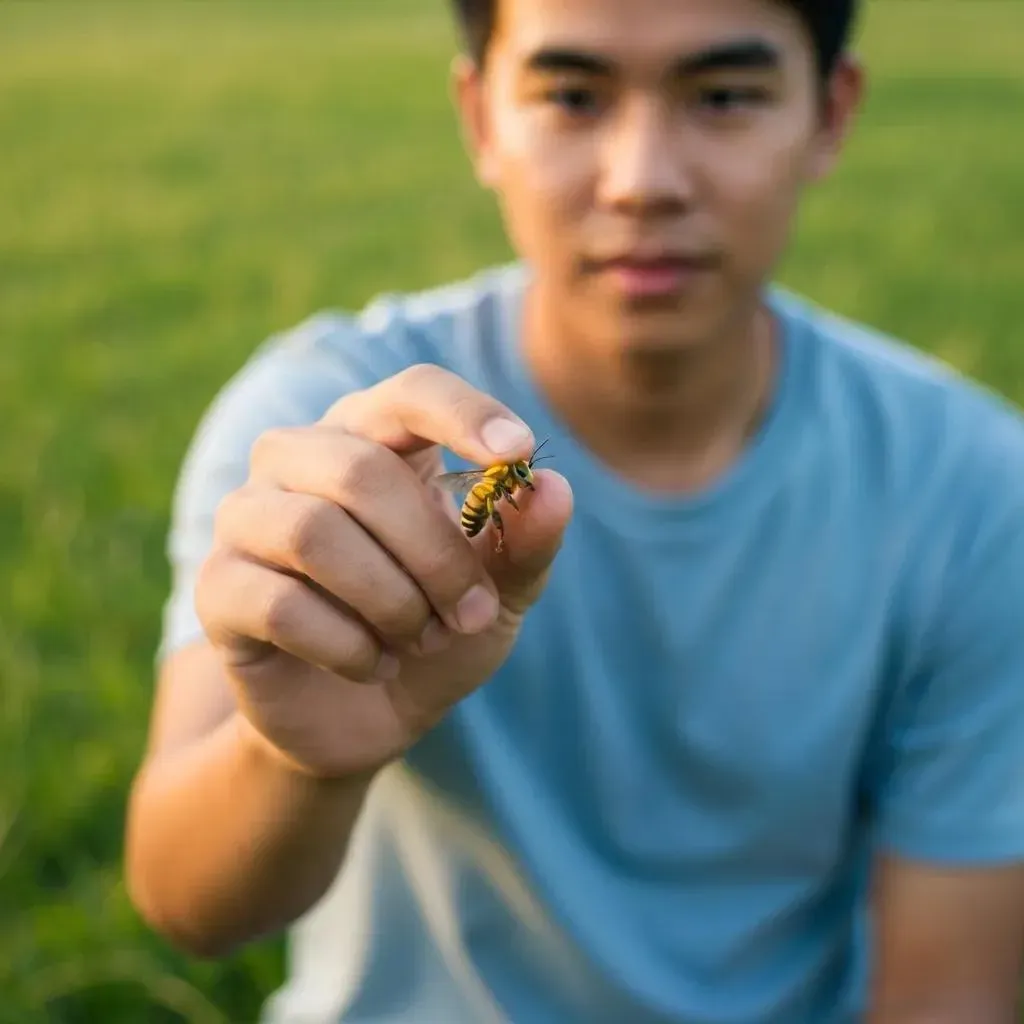
Yellow jackets construct subterranean nests in lawns or rodent burrows, creating large, hidden colonies of several thousand workers. Their stocky, smooth bodies and aggressive defense demand insecticidal dust or professional dusting applicators. Approaching ground nests requires careful scouting for entrance/exit holes and full protective gear.
What Distinguishes Hornets from Other Wasps?
Hornet nests are enclosed in thick, grey papery envelopes hung high in trees or on building exteriors. European and bald-faced hornets can exceed 3,000 to 5,000 members and will aggressively swarm when disturbed. Safe removal often calls for professional mist-blower sprays or high-pressure injector tools to deliver control agents through the nest envelope.
How to Differentiate Wasps from Bees for Safe Removal?
Wasps typically have narrow waists and smooth bodies, while bees display more hair, wider waists, and pollen-collecting structures. Since many bee species are vital pollinators, misidentifying a honeybee or bumblebee nest and destroying it can harm local ecosystems. A clear visual check of body shape and nest material prevents unintended damage to beneficial insects.
| Species | Nest Location | Key Identification Traits |
|---|---|---|
| Paper Wasp | Under eaves, porch roofs | Slender body, dangling legs, open comb structure |
| Yellow Jacket | Underground burrows,stumps | Stocky build, smooth bodies, small ground entrance hole |
| Hornet | Tree branches, attics | Large enclosed papery envelope, robust swarm response |
| Bee | Hollow logs, hives | Fuzzy body, pollen baskets on legs, hexagonal wax comb |
This comparison clarifies which removal tactics match each colony type and guides you toward the next step: choosing a safe DIY approach.
What Are the Safe DIY Methods to Remove a Wasp Nest?
DIY removal techniques focus on non-toxic or low-toxicity methods that allow homeowners to address small or accessible nests safely, provided they employ correct timing, protective gear, and application tools. Selecting the right strategy reduces environmental impact while maintaining control.
How to Use Soap and Water Spray for Safe Wasp Nest Removal?
A soapy water solution works by clogging wasp spiracles and causing rapid collapse of small colonies.
- Mix 2 tablespoons of liquid dish soap with 1 quart of water in a spray bottle.
- Approach at night wearing full protective clothing and headgear.
- Spray the nest entrance liberally from 5–8 feet away.
- Wait 24 hours to confirm inactivity, then remove the nest.
This method offers an eco-friendly alternative that neutralizes wasps without harsh chemicals, leading naturally into essential oil repellent options.
Can Essential Oils Like Peppermint Repel Wasps Safely?
Peppermint, clove, and geranium oils disrupt wasp pheromone trails and deter nest construction when applied correctly.
- Combine 10 drops of peppermint oil with 2 tablespoons of water and a teaspoon of dish soap in a spray bottle.
- Spray around eaves, door frames, and known nesting sites weekly.
- Reapply after rain or humidity spikes.
While oils reduce the likelihood of nesting, they are preventive rather than curative, making them a complement to removal and prevention efforts.
What Are the Precautions When Using Commercial Wasp Sprays?
Commercial aerosol sprays deliver quick knockdown but require strict adherence to label instructions and personal protective equipment (PPE).
- Wear thick gloves, long sleeves, pants, closed-toe boots, and a face shield.
- Stand at a safe distance (10–15 feet) and target the nest entrance directly.
- Avoid drifting wind and have an escape route planned.
- Read reentry interval guidelines before discarding the nest.
Observing these precautions ensures maximum effectiveness with minimal risk of secondary stings or chemical exposure.
How to Physically Remove Small Wasp Nests Without Risk?
For tiny nests with fewer than 50 wasps attached to low branches or gutters:
- Apply a generous soapy water spray at night.
- Once inhabitants are inactive, gently cut the branch or pry the nest from its attachment point using a long pole.
- Seal the nest in a double-bagged trash sack and discard in an outdoor bin.
This low-risk approach transitions seamlessly into ground nest removal tactics for subterranean colonies.
What Are the Safe Methods for Removing Ground Wasp Nests?
Ground nests require dust insecticide or boiling water to reach hidden chambers.
- Apply labeled insecticidal dust through the entrance hole after dark, then seal with a rock or soil.
- Alternatively, pour two gallons of boiling water directly into the tunnel entrance in cooler weather.
- Confirm kill rate after 24 hours before excavating the cavity.
These methods provide targeted elimination without risking a full-scale swarm attack.
When Should You Call a Professional Exterminator for Wasp Nest Removal?
Professional intervention becomes essential when nests exceed manageable size, occupy hard-to-reach locations, or involve aggressive species and allergy risks. Expert services ensure thorough removal, legal compliance, and post-treatment guarantees.
What Size or Location of Nest Requires Professional Removal?
Nests larger than a basketball, situated in attic voids, inside wall cavities, or above high ceilings call for licensed pest control technicians. Their specialized access equipment and control agents handle large volumes of wasps safely.
How Do Allergies Influence the Decision to Hire a Professional?
Homeowners with a history of anaphylaxis or those caring for allergy-sensitive individuals should outsource removal to minimize life-threatening sting exposure and secure immediate medical support on site.
What Can You Expect from a Professional Wasp Nest Removal Service?
A certified exterminator typically:
- Conducts a thorough site assessment and species identification
- Applies industrial-grade aerosol or dust products under OSHA guidelines
- Seals nest entry points post-treatment
- Provides a service warranty and follow-up inspections
This structured process delivers peace of mind and lasting protection.
How Much Does Professional Wasp Nest Removal Typically Cost?
Service fees vary by region, nest size, and complexity, averaging $150–$400 for standard outdoor nests and $300–$800 for attic or wall-embedded colonies. Many providers offer free inspections and bundled pest-control plans for year-round coverage.
What Essential Safety Precautions Should You Take When Removing a Wasp Nest?
Personal protective equipment, escape planning, and emergency readiness form the backbone of any safe removal effort, whether DIY or professional.
What Personal Protective Equipment (PPE) Is Needed for Safe Removal?
- Thick, long-sleeved coveralls or a beekeeper’s suit
- Heavy leather or nitrile gloves extending past the wrists
- Closed-toe boots and socks pulled over pant legs
- Full head and face protection such as a beekeeping veil or hood
Safe Pest Control Practices
The use of personal protective equipment (PPE) is essential when removing wasp nests to minimize the risk of stings and exposure to pesticides. This includes wearing protective clothing, gloves, and face protection, as well as following safety guidelines for the application of insecticides.
United States Environmental Protection Agency, "Pest Control and Safety" (2024)
This citation reinforces the article's recommendations for safe practices during wasp nest removal, including the use of PPE and adherence to safety guidelines.
Why Is Nighttime the Safest Time for Wasp Nest Removal?
Nighttime operations benefit from reduced ambient temperatures and lowered wasp activity, concentrating the colony inside the nest. Darkness suppresses foraging behavior and limits defensive predawn flights, making control agents more effective
How to Prepare an Escape Route and Keep Others Safe During Removal?
Before any treatment:
- Clear bystanders, pets, and vehicles from the area.
- Identify two separate egress paths in case of aggressive flights.
- Position a helper at a safe distance to watch for unexpected activity.
- Keep a charged cell phone and first-aid kit close by.
These steps ensure rapid retreat and prompt assistance if stings occur.
What Are the Emergency Steps if You Get Stung During Removal?
- Move away from the nest to a safe zone immediately.
- Wash the sting site with soap and water to reduce venom spread.
- Apply a cold compress to ease pain and swelling.
- Administer antihistamine or epinephrine if prescribed for allergies.
- Seek medical attention if breathing difficulties or rapid swelling occur.
Being prepared with a clear action plan transforms a potential crisis into a manageable event.
How Can You Prevent Future Wasp Nests Safely and Effectively?
Long-term prevention combines mechanical barriers, habitat modification, and behavioral deterrents to make your home unattractive to nesting wasps.
How Do Decoy Nests Help in Preventing Wasps?
Wasps avoid nesting near existing colonies, so hanging lightweight, artificial papier-mâché nests under eaves disrupts site selection and encourages them to relocate elsewhere.
What Natural Repellents and Essential Oils Are Effective for Prevention?
A weekly spray of water infused with peppermint, cinnamon, or clove oils around rafters, soffits, and door frames disrupts wasp scouting behavior without harming beneficial insects.
How to Seal Entry Points to Stop Wasps from Nesting?
Inspect and caulk cracks, gaps around windows, roof vents, and soffits; install fine-mesh screens over attic vents; replace missing shingles or siding panels. Blocking these access points denies nesting opportunities.
What Role Does Habitat Modification Play in Wasp Prevention?
Removing fallen fruit, securing trash can lids, and relocating open compost piles reduce food attractants that sustain foraging wasps, making your property less inviting for colony establishment.
What Are the Most Common Questions About Safe Wasp Nest Removal?
Homeowners frequently seek clarity on the balance between DIY control and professional support, the permanence of removal methods, and proper nest disposal to avoid return infestations. Addressing these concerns ensures informed decisions and lasting results.
Should I Remove a Wasp Nest Myself or Hire a Professional?
Self-removal is viable for small, accessible nests with documented methods and adequate PPE; however, large or hard-to-reach nests, or any scenario involving venom allergies, warrant professional expertise to guarantee safety and completeness.
Can Wasps Return to a Nest That Has Been Sprayed?
Residual pheromone cues and partial colony survival can encourage recolonization if the nest envelope remains intact. Complete nest removal and perimeter deterrent treatments are required to prevent reuse.
What Should I Do with a Wasp Nest After Removal?
Seal the empty nest in a sturdy plastic bag, place it in an outdoor trash bin, and compress it to deter scavengers. Never leave debris near entry points to avoid attracting scouting wasps.
Are All Wasp Nests Dangerous?
While most wasp nests pose sting risks when disturbed, small paper wasp clusters in low-traffic areas can sometimes be tolerated or removed with minimal intervention. Aggression levels vary by species and colony size.
Do You Need to Remove Old or Abandoned Wasp Nests?
Abandoned nests rarely attract new wasps but can harbor debris and pathogens. Removing old nests during routine maintenance helps you identify emerging infestations early and maintain structural integrity.
Maintaining a safe approach to wasp nest removal protects your household while respecting ecological balances and pollinator roles. By combining accurate identification, proper timing, protective equipment, and long-term prevention measures, homeowners can eliminate existing nests and prevent future threats. Whether you choose a DIY solution for small nests or enlist professional pest control for complex cases, these strategies empower you to reclaim your property securely and responsibly.
Get Quick, Efficient Pest Control & Exterminating
When pests invade your home, waiting isn't an option. At Resolve Pest Management, we understand how urgent these situations can be. That’s why we offer 24-hour emergency pest control services to residents in Lacey, NJ and Bayville, NJ. Whether it’s rodents, insects, or wildlife, our expert team is available day or night to protect your home and restore your peace of mind.
Our treatments are family and pet-friendly, ensuring that your loved ones—including the furry ones—are safe during and after service. We know your time is valuable, which is why we provide rapid scheduling, getting you the help you need, right when you need it.
If you're dealing with a pest emergency, don’t wait! Contact Resolve Pest Management today for immediate assistance. We're here to help make your home pest-free and comfortable again.
24-Hour Emergency Pest Control
We know pests can strike at any time- day or night. Resolve Pest Management is here to help 24 hours a day.

Family & Pet-Friendly Treatments
Protecting loved ones- furry or not is our #1 priority. We use pet-friendly treatments to give peace of mind.

Testimonials
"Resolve Pest Management is absolutely wonderful. Carlos and his team do thorough work and will put your mind at ease. They explain everything that needs to be done or what they suggest should be done. When we first called, Carlos showed up and checked every area of the house. Not only did he handle the mouse issue, he also found termite damage that was unknown to us. Since then, we have regular maintenance and have even called them other issues like bees. The receptionist is also very professional and kind, working with our availability. My family and I highly recommend Resolve Pest Management."
Tonianne D.
Barnegat Township NJ
Get on Schedule Today
